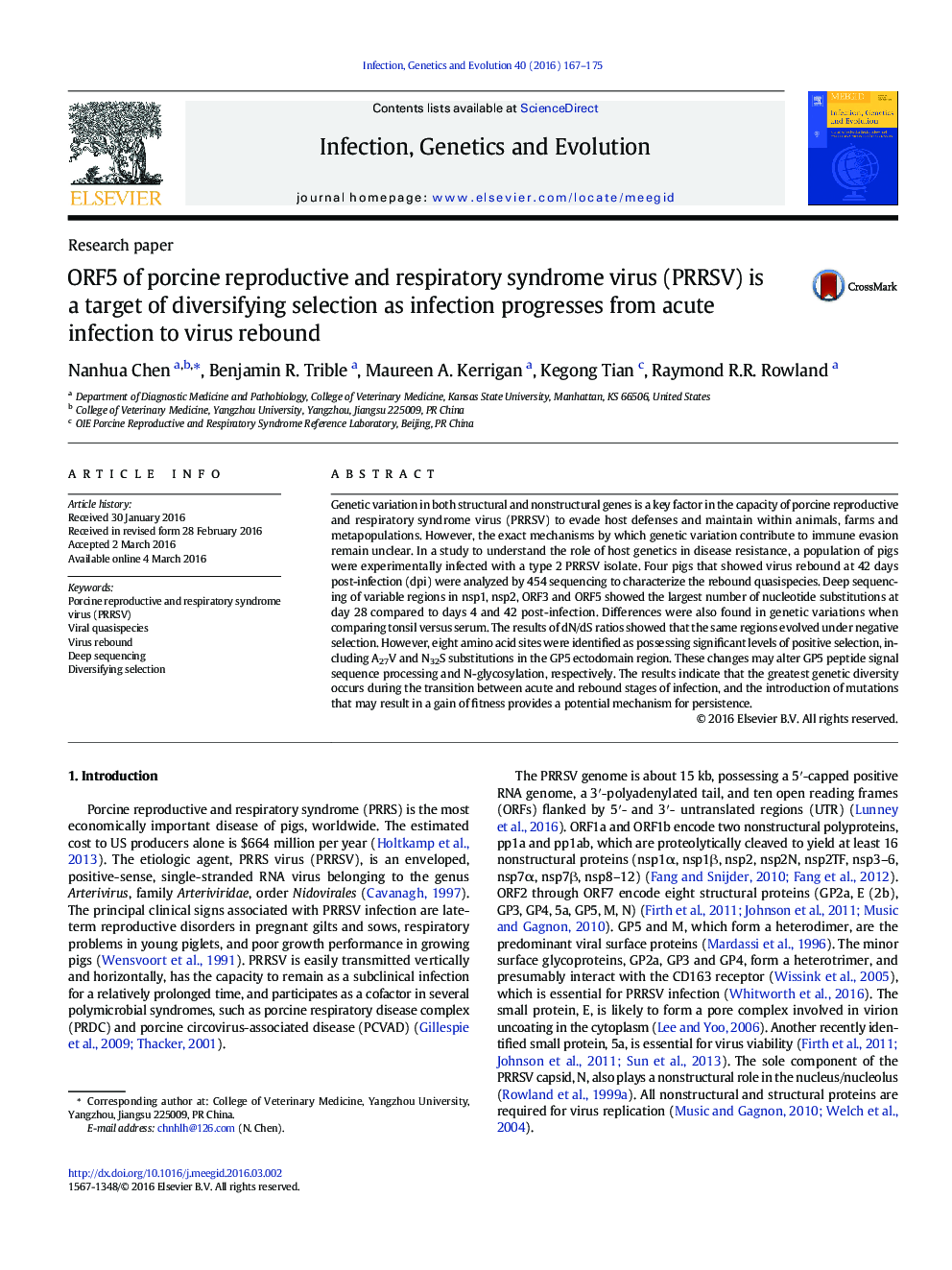| کد مقاله | کد نشریه | سال انتشار | مقاله انگلیسی | نسخه تمام متن |
|---|---|---|---|---|
| 5908316 | 1570163 | 2016 | 9 صفحه PDF | دانلود رایگان |

- PRRSV had the highest genetic diversity at 28Â dpi compared to 4Â dpi and 42Â dpi.
- PRRSV variable regions evolved under diversifying selection during rebound infection.
- A27V and N32S substitutions in GP5 may alter signal peptide processing.
- N32S substitution in GP5 created an alternative N-linked glycosylation motif.
- Positively selected mutations in GP5 may contribute to persistence.
Genetic variation in both structural and nonstructural genes is a key factor in the capacity of porcine reproductive and respiratory syndrome virus (PRRSV) to evade host defenses and maintain within animals, farms and metapopulations. However, the exact mechanisms by which genetic variation contribute to immune evasion remain unclear. In a study to understand the role of host genetics in disease resistance, a population of pigs were experimentally infected with a type 2 PRRSV isolate. Four pigs that showed virus rebound at 42Â days post-infection (dpi) were analyzed by 454 sequencing to characterize the rebound quasispecies. Deep sequencing of variable regions in nsp1, nsp2, ORF3 and ORF5 showed the largest number of nucleotide substitutions at day 28 compared to days 4 and 42 post-infection. Differences were also found in genetic variations when comparing tonsil versus serum. The results of dN/dS ratios showed that the same regions evolved under negative selection. However, eight amino acid sites were identified as possessing significant levels of positive selection, including A27V and N32S substitutions in the GP5 ectodomain region. These changes may alter GP5 peptide signal sequence processing and N-glycosylation, respectively. The results indicate that the greatest genetic diversity occurs during the transition between acute and rebound stages of infection, and the introduction of mutations that may result in a gain of fitness provides a potential mechanism for persistence.
Journal: Infection, Genetics and Evolution - Volume 40, June 2016, Pages 167-175